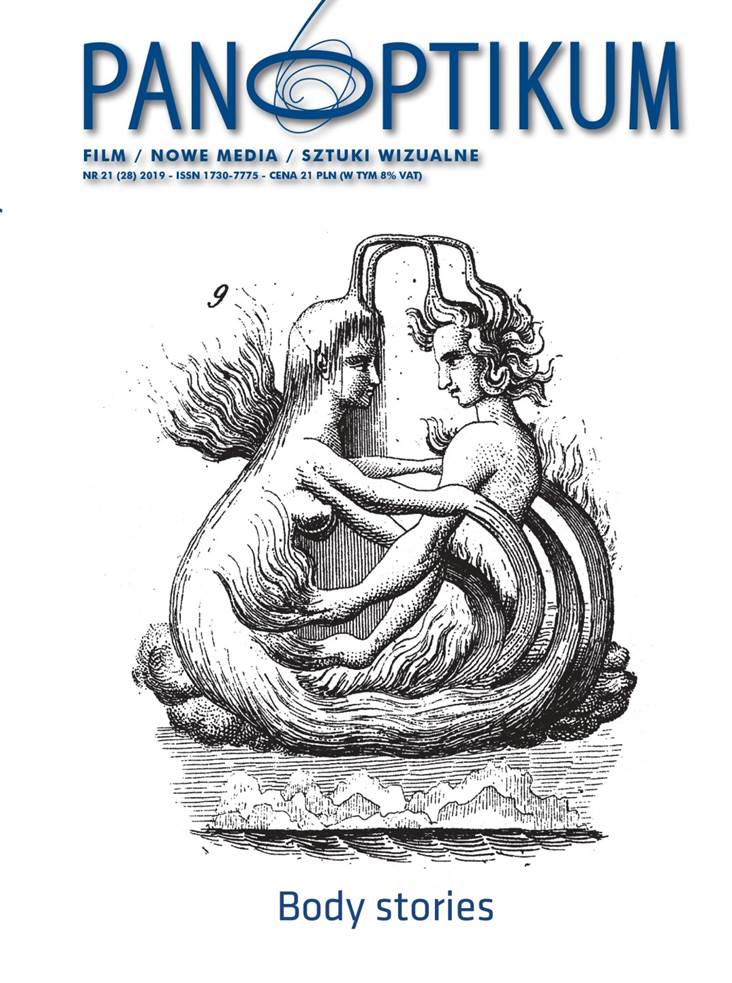Śnieżna depresja i norweskie podróże do kresu ironii. Reinterpretacje poetyki kina drogi w filmie "Białe szaleństwo" Rune Denstada Langlo oraz w literackiej twórczości Erlenda Loe
DOI:
https://doi.org/10.26881/pan.2019.21.08Słowa kluczowe:
Norwegian cinema, national discoursesAbstrakt
Contemporary Norwegian cinema uses the conventions of the road movie to deconstruct the narrative structures of travel stories and deploys them as a means of social critique. Such a strategy may also demystify the involvement of national discourses in the so called “tourist view”. The article analyzes the cinematic adaptation of Erlend Loe’s screenplay called “Nord” (2009). The movie was advertised in Poland as an “antidepressant comedy from the polar circle”. However, this interpretation of the plot and aesthetics of the film tries to prove the opposite thesis, presenting some arguments proving that the feature structure of Rune Denstad Langlo’s film provides the basis for perceiveing it as a cultural text, which plays with the post-ironic perspective and selected pastiche formulas to reinterpret (and sometimes even deconstruct) the conventions of the road cinema in order to undertake the phantasmatic reflections on the problem of depression and postmodern fears in a consumer society.
Downloads
Bibliografia
Bachtin M. (1974), Czas i przestrzeń w powieści, „Pamiętnik Literacki”, nr 65.
Booth M. (2015), Skandynawski Raj. O ludziach prawie idealnych, przeł. B. Gutowska-Nowak. Kraków: Wydawnictwo Uniwersytetu Jagiellońskiego.
Campbell J. (1997), Bohater o tysiącu twarzy, przeł. A. Jankowski. Warszawa: Zysk i spółka.
Chacińska M. (2018), W służbie ludu i inżynierii społecznej. Media publiczne w Danii, Norwegii i Szwecji w perspektywie historycznej i kulturowej. Gdańsk: Wydawnictwo Uniwersytetu Gdańskiego.
Chylińska A. (2014), Psychospołeczna diagnoza „pokolenia ironistów” w wybranych dziełach Erlenda Loe. Gdańsk: Uniwersytet Gdański, Katedra Kulturoznawstwa.
Czaja D. (2018), Gramatyka bieli. Antropologia doświadczeń granicznych. Kraków: Wydawnictwo Pasaże.
Films on Ice. Cinemas of the Arctic (2015), red. S. MacKenzie, A. Westerståhl Stenport. Edinburgh: Edinburgh University Press Ltd.
Gelter H. (2000), Friluftsliv: The Scandinavian Philosophy of Outdoor Life, „Canadian Journal of Environmental Education”, nr 5.
Holst J.E. (2011), Film w służbie społeczeństwu. Współczesna polityka filmowa w Norwegii, [w:] Kino Norwegii, red. P. Urbaniak. J. Holst. Warszawa, Kraków: Korporacja Halart.
Klejsa K. (2008), Filmowe oblicza kontestacji: kino Stanów Zjednoczonych i Europy Zachodniej wobec kultury protestu przełomu lat sześćdziesiątych i siedemdziesiątych, Warszawa: Wydawnictwo Trio.
Kristeva J. (2007), Czarne słońca. Depresja i melancholia, przeł. M. P. Markowski, R. Ryziński. Kraków: Universitas.
Loe E. (2006), Doppler, przeł. M. Skoczko. Gdańsk: Słowo/Obraz Terytoria.
Oxfeldt E. (2010), Journeys from Scandinavia Travelogues of Africa, Asia, and South America, 1840—2000. Minneapolis: University of Minnesota Press.
Pietrasik Z., https://www.polityka.pl/tygodnikpolityka/kultura/film/1503840,1,recenzja- filmu-biale-szalenstwo-rez-rune-denstad-langlo.read, (dostęp: 29.08.2019).
Rees E. (2015), The Nordic ‘Quirky Feel-Good’, [w:] Nordic Genre Film. Small Nation Film Cultures in the Global Marketplace, red. T. Gustafsson, P. Kääpä. Edinburgh: Edin- burgh University Press Ltd.
Urbaniak P. W poszukiwaniu języka. Czym jest nowe kino norweskie, [w:] Kino Norwegii, red. P. Urbaniak. J. Holst. Warszawa, Kraków: Korporacja Halart.
Vassenden E. (2004), Den store overflaten. tekster om samtidslitteraturen. Oslo: Damm.
Wallace D.F. (2016), Rzekomo fajna rzecz, której nigdy więcej nie zrobię. Eseje i rozważania, przeł. J. Kozak. Warszawa: Wydawnictwo WAB.
Witoszek N. (2017). Najlepszy kraj na świecie, przeł. M. Kalinowski. Wołowiec: Wydawnictwo Czarne.

 Uniwersyteckie Czasopisma Naukowe
Uniwersyteckie Czasopisma Naukowe









